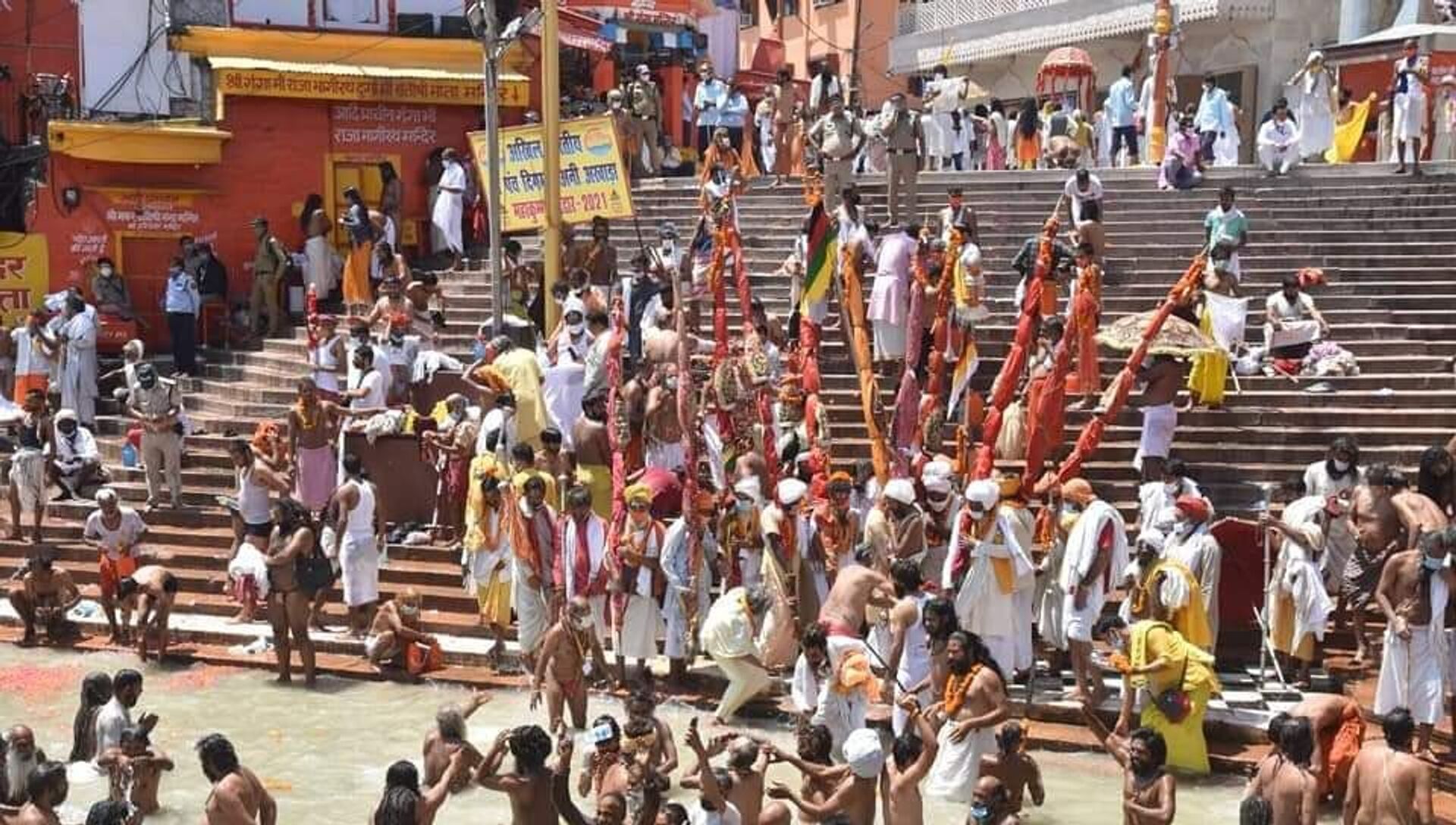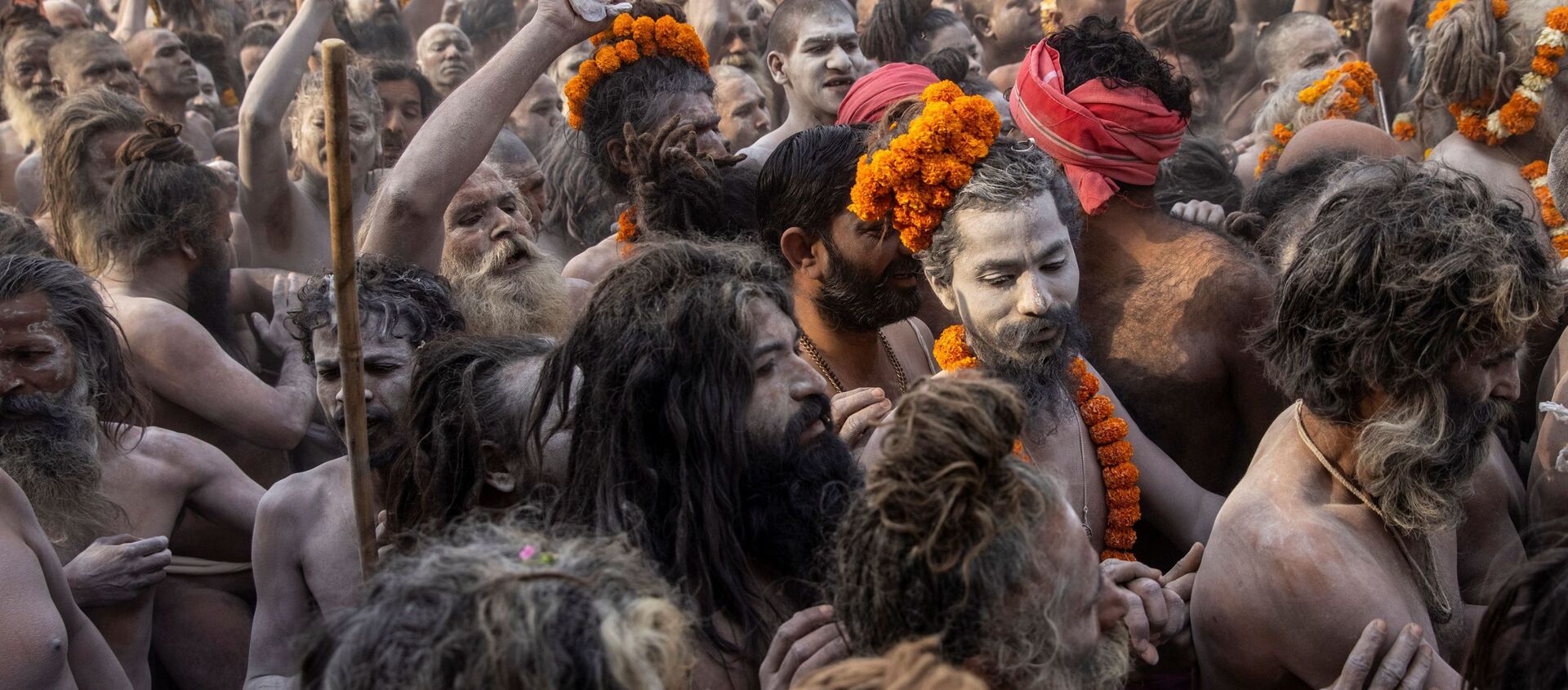Hundreds of Hindu devotees converged at the “Har Ki Pauri”, the main river bank of the Ganges, in India's Haridwar city on Tuesday to mark the last of the four holy dips as part of the Kumbh festivities.
The gathering was allowed by the government of Uttarakhand state despite the fact that India is registering a devastating number of COVID cases each day - more than 300,000 - along with more deaths than are officially being reported by the country’s health ministry.
Talking to Sputnik, Aditya Kapoor, a 27-year-old resident of Haridwar revealed that compared with the earlier three “Shahi Snans" (religious royal baths) that took place between late March and April, this latest ritualistic bath in the Ganges was far lower key.
“Members of the local priest community of Haridwar joined groups of holy men and Naga Sadhus for the final ‘Shahi Snan’ today. Local residents and travellers from other cities were almost next to nil – which was not the case in the previous ‘Shahi Snans’," he said.
"The nearby local markets which are otherwise busy, also remained quiet. The bus stops and railway stations witnessed crowds of people as Kumbh devotees began returning to their home towns. Random testing of attendees was also being conducted at the river banks,” Kapoor added.
Of those who attended the last of the holy dips in the Ganges, some were wearing face masks and some were not. There was some pushing and shoving - social distancing was not followed strictly by the masses.
— Arjun Parashar (@Arjun_Parasharr) April 27, 2021
— Sayyam Jain (@__sayyamjain__) April 27, 2021
— TRT World Now (@TRTWorldNow) April 27, 2021
Usually regarded as one of the most auspicious and biggest gatherings of Hindus in India, this year’s Haridwar Kumbh may go down in history as a super spreader of the deadly coronavirus. In past weeks, thousands of attendees tested positive for COVID according to local senior health officials. But the festivities were not cancelled by the government.
“There should not have been this gathering at Haridwar this year, under the present circumstances. The government should have taken a wiser call. Haridwar is a small town," Shashank Kashyap, another local from Haridwar, told Sputnik.
"We do not have hi-tech pathology labs and big enough hospitals to accommodate COVID patients if there were an outbreak such as in Delhi. This gathering not only endangered the life of the attendees, but also the life of people travelling with Kumbh attendees in buses and trains. These attendees, many of whom could test positive for the virus, would get down at different cities and further spread the virus,” he added.
This year, the Hindu congregation started on 11 March and came to its conclusion on 27 April in Haridwar city.
Meanwhile, the total number of cases in India has crossed the 17 million mark and there have been 197,894 deaths reported so far.
The number of active cases in India is approximately 2.9 million (2,882,204 at time of writing) and more than 14.5 million (14,556,209) patients have recovered so far in the country, according to the federal Health and Family Welfare Ministry.
The country is struggling to meet the demand for medical oxygen, beds, and drugs for COVID patients, and is being offered help by other countries including the UAE, Saudi Arabia, UK, US, Germany, Pakistan, Singapore and Bhutan.
With several states imposing lockdowns in cities, India is opening its vaccination drive against coronavirus for everybody aged more than 18 from 1 May.




